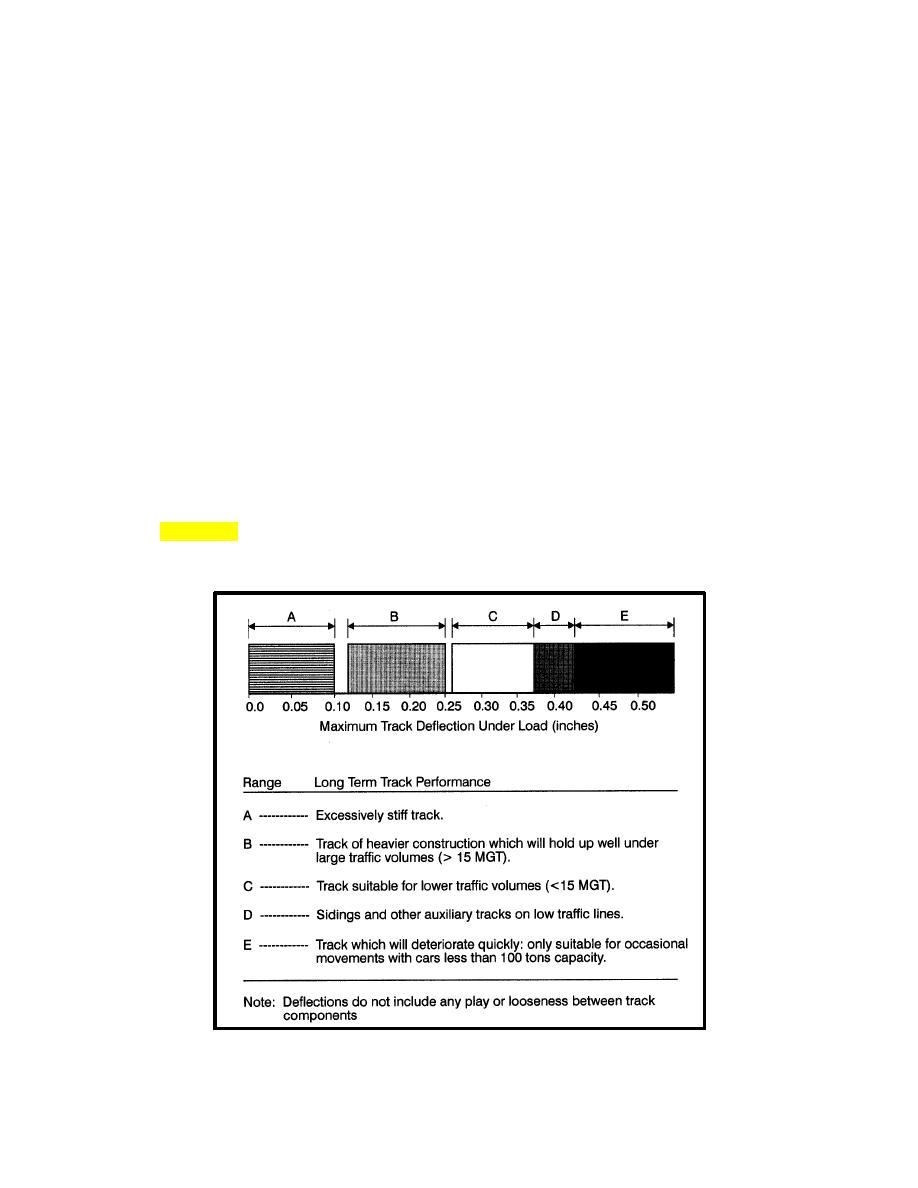
CEMP-E
TI 850-02
AFMAN 32-1125(I)
1 MARCH 2000
(2) The guidance below is based on recognizing that most military track operates at relatively low
traffic volumes (less than 5 million gross tons per year) and at relatively low speeds (less than 25 mph),
and uses jointed, rather than continuously welded, rail.
(3) For unusual cases where yearly traffic frequencies are expected to exceed 5 million gross tons,
designers may follow the method directly from chapter 16 of the AREMA Manual.
b. Basis for Design.
(1) The AREMA track design method is based on extensive field and laboratory testing conducted
between 1914 and 1940. The committee supervising the tests and evaluations was led by Professor
Arthur Talbot of the University of Illinois, whose name is often used when referring to the tests and
(2) One of the Talbot Committee's findings was that, when subject to a large number of load
repetitions ("millions of groups of car wheels"), the greater the vertical rail deflection under those loads,
the faster the track condition deteriorated. From the data and observations collected, the AREMA then
developed a track design method based on limiting or controlling vertical rail deflection.
(3) Figure 6-12 illustrates the general relationship between track deflection and track performance
over long time periods. The design criteria in this section are based on limiting the deflection of main
running tracks to 0.3 in. and of auxiliary, storage, spur, and light use tracks to 0.4 in.
Figure 6-12. Maximum Track Deflection and Long-Term Track Performance.
6-14



 Previous Page
Previous Page
